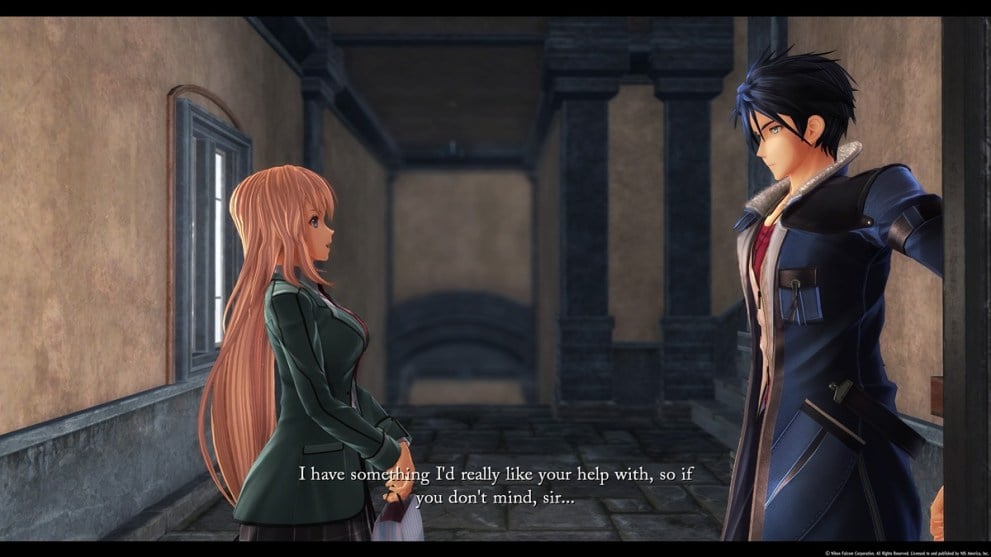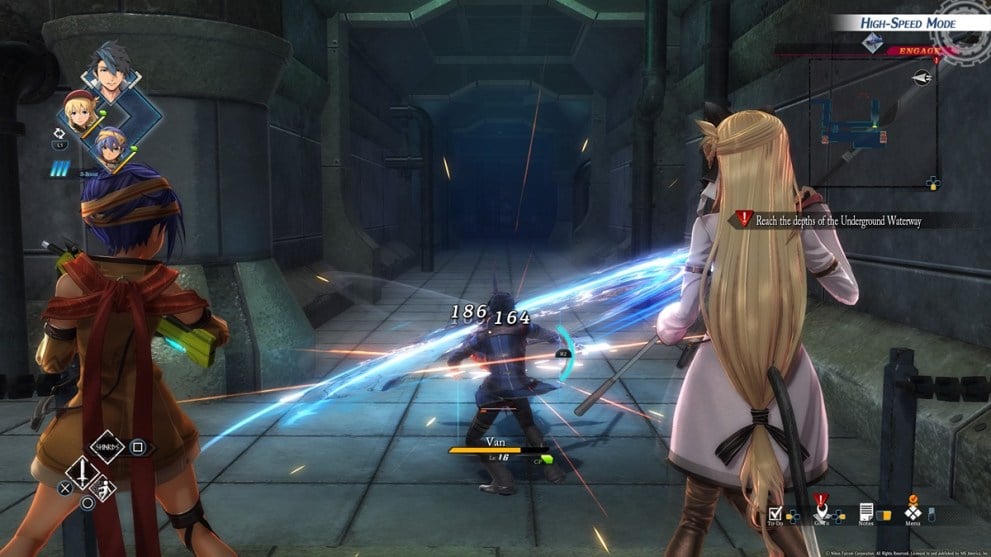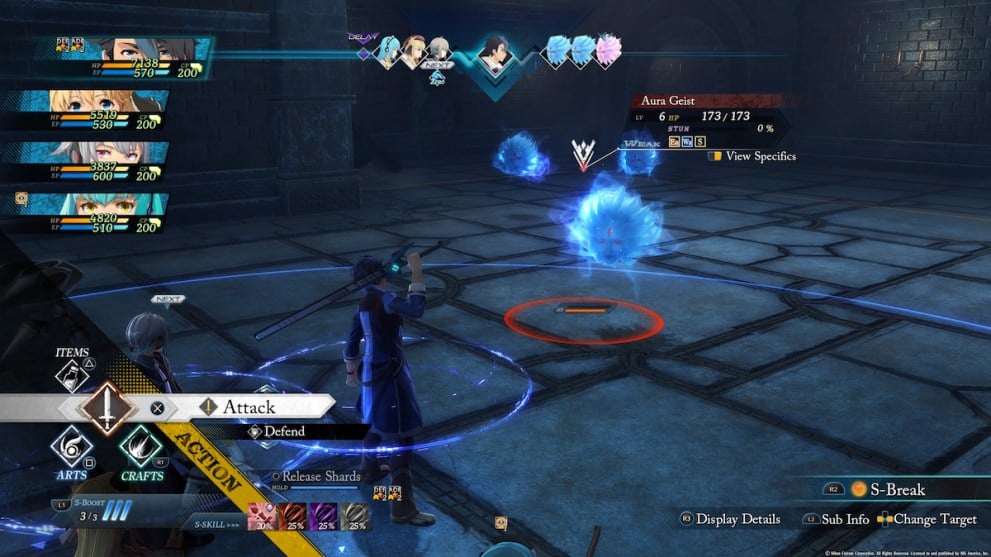The Legend of Heroes: Trails Through Daybreak on PS5
The Trails series is something of a marvel at this point, as this release marks the 11th release of the mainline series that began in 2004. Yet, 20 years later, it is still innovating and taking the series to new heights. That’s not to say this is a game only for series fans. As with all arc introduction games, this is a possible starting point for new players. However, it’s not quite a highly recommended one. As amazing an entry as this is, it is still a piece of a much grander puzzle that deserves to be experienced from an earlier point.
Trails Through Daybreak presents a new piece of the Zemurian puzzle and takes players into the Calvard Republic for the first time. While there are plenty of returning faces, the main focus is on Van Arkride, who runs a business (called Arkride Solutions) for those needing some grey-area help. Van is referred to throughout the game as a ‘Spriggan,’ which means someone who will take on any job, regardless of legality. For this reason, he is at odds with the Bracer guild and Calvardian police.

His first job in the game becomes one of his longest, with Agnès Claudel (pronounced awn-yes) seeking out Van to assist with finding mysterious devices left behind by her famous great-grandfather. This takes them all over Calvard, as a new shadowy mafia rivaling even Ouroboros has risen to threaten the nation. Daybreak eschews the tradition of starting low stakes before growing into a wider conspiracy. Instead, you are dropped into a world where things are already starting to bubble over.
As Van is older than any previous protagonist, he brings a new, mature air to things. To date, the series has had something of a naive feel to it, with every protagonist fulfilling the role of a dedicated do-gooder. However, Van spins this on his head, presenting a more rough-and-tumble outlook on life. His life experience means he’s not afraid to sink into the seedy side of Calvard’s society without trying to correct it.
Van might be a new character in the series, but plenty of times, it is revealed (through dialogue) that he has participated in significant story events. This is partially why I think the game isn’t exactly great for newcomers. While the game does introduce returning characters and gives some backstory, it’s not a complete picture. When discussing past events, characters withhold direct details or refer to them vaguely. The game offers backstory sections that recap every game but feel like nothing more than brief synopses.
However, this game is perfect for returning players as characters you know will often reference others you know. Every time that happened, it felt like I was getting an update about an old friend. One of the best parts of the Trails series is the expansive worldbuilding, and every reminder of that only makes me love it more.
Every game that has started a new arc has changed the combat system meaningfully, but I think Trails Through Daybreak brings in the most prominent change yet. It’s not that it upends the traditional turn-based aspect, but it makes it optional outside of scripted and boss fights. Cold Steel 3 was the first to enhance the traditional ability to attack enemies out in the field to stun them or outright kill the weaker ones.

Daybreak takes that further to make the game essentially a half-action RPG. All enemies can be fought entirely out in the field for the same XP and rewards you would get by facing them in turn-based battles. It’s a relatively normal hack-and-slash, but it feels akin to Falcom’s other series, Ys. The big thing is that this makes all content entirely voluntary.
In any previous game, making contact with an enemy would begin a battle. With how it works now, the game defaults to letting you fight the enemies on the field, and pressing a button takes you into turn-based. This means you can avoid all fighting and beeline to the end of an area/dungeon if you want, as enemies will only chase you so far.
This change suddenly made it so there wasn’t a single dungeon or monster-filled area that felt like it overstayed its welcome. I wasn’t constantly getting sucked into fights, so I was able to plan out combat better. While I love JRPGs, I regularly experience combat fatigue and start getting bored of it as I get closer to the end, and this new mechanic completely negated that.

This isn’t to say that the turn-based side was ignored. The best change there is how it has fixed up combat links. In the Cold Steel games, these links were manually set between characters you wanted to pair. Through this, you could pair up your best partners. Daybreak makes these links free-standing. As long as you attack close to another character, they participate by giving a follow-up attack or a damage buff.
A major change in Orbment has also taken place. As this is Calvard, with its own technological advancements, the Xipha has replaced the ARCUS devices. This means that Master Quartz are no longer the prized possession. In their place are Holo Cores, each providing a different AI voice you’ll hear in turn-based combat. Otherwise, all the usual Quartz and slot unlocking are very familiar facets.
Though I will always have a soft spot for the Cold Steel games, Trails Through Daybreak arrives as the new best game of the series. Between giving a more mature protagonist and redefining the combat, the Calvard arc starts with its best foot forward. The fact that things have already become this hectic with the very first game means we’re looking at probably the craziest arc to date. Sadly, these take a bit of time to localize, and we’ll be two behind in September, but I will be right there when the next one hits.
The Legend of Heroes: Trails Through Daybreak
Though I will always have a soft spot for the Cold Steel games, Trails Through Daybreak arrives as the new best game of the series. Between giving a more mature protagonist and redefining the combat, the Calvard arc starts with its best foot forward. The fact that things have already become this hectic with the very first game means we’re looking at probably the craziest arc to date. Sadly, these take a bit of time to localize, and we’ll be two behind in September, but I will be right there when the next one hits.
Pros
- New Action RPG-esque field combat.
- Enhanced traditional turn-based combat.
- New locations to explore that haven’t been featured in any previous game.
- Morally grey protagonist feels fresh after so many do-gooder main characters.
- Ditches the usual slow burn story formula of arc-openers.
Cons
- Better for returning players than for new ones.
A copy of this game was provided by the publisher for review. Reviewed on PS5, PS4, PC, Switch.













